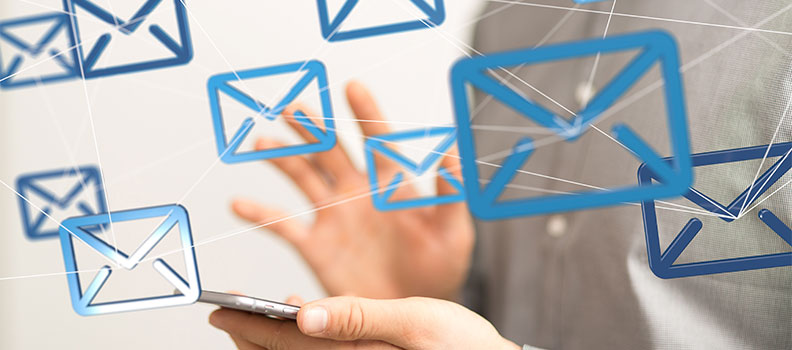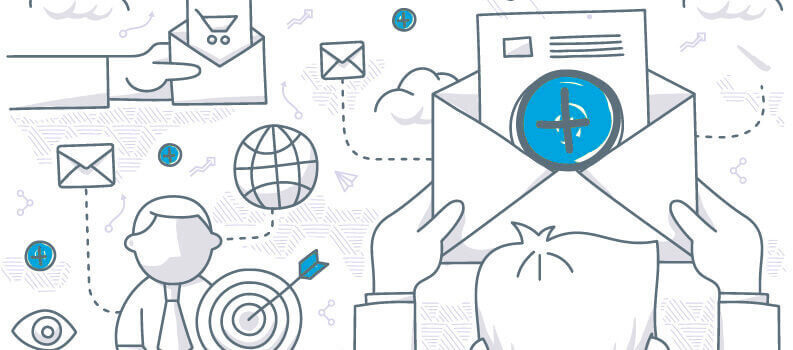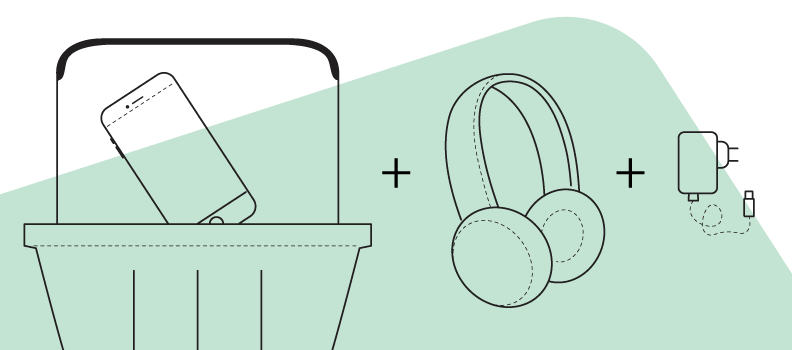Acquiring customers via email campaigns is a marketing science that has evolved significantly in recent years. It calls for an entirely fresh approach to creative design and best practices for email marketing as a whole.
Gone are the days where simple trigger words or excessive punctuation are the only red flags that doom a creative to complete failure. Both ISPs and end users have become a lot more sophisticated, and it’s time for every marketer to adapt to the new inbox landscape.
The below best practice guidelines have been developed from the collaboration of several teams within Data Axle USA, pooling their knowledge and expertise to help make our client’s campaigns a success. The specific rules continually evolve, but these helpful suggestions will get any marketer on the right track.
CREATIVE DESIGN RECOMMENDATIONS – DESIGN FOR VISUAL APPEAL
- Subject Line – Keep the subject line to 49 characters or less. A subject line that is longer may get cut off in the user’s view of their mailbox.
- Logos – Feature the brand logo prominently in the message.
- Headers & Pre-Headers – Use of message headers and navigation menus is recommended. Consider using a “pre-header” to greet the user that has a short email summary and a call-to-action. This should come above the message in the preview panel, and ideally be integrated into it. This is good for mobile users. Just remember to keep it short!
- Fonts – Use universally available fonts (Arial, Verdana, Tahoma, or Times New Roman). Any other fonts will resort to a default font if the recipient doesn’t have it installed on their computer. Minimize the number of fonts, sizes, and colors for an overall more efficient look and design.
- Images – Use ALT tags in the HTML code for each image used in the HTML design. Minimize graphics and images to logos, photos of products, or situational photos that support the message and appeal to the target audience visually.
- Message Length – Keep the message short and to the point (about one page maximum in length). The additional details of a message should be provided on a hyperlinked web page.
- Key Selling Points – Use bullet points to illustrate the key selling points, which will tell the user why they should respond to the call-to-action.
- Call-to-Action – The call-to-action should be clear and obvious. The hyperlink should be prominently displayed in multiple locations if the purpose is to drive customers to your website or an intermediate landing page. Measure results via click-throughs – how many users clicked through to your landing page or website. Also be sure to track phone calls, email inquiries and completed sales in the days following the email send. Many marketers also set up special phone numbers and unique email addresses for this tracking purpose.
- Social Marketing Element – Include share buttons for one or more social marketing sites. This will enhance credibility and help your campaign to go “viral.”
- Mobile Marketing Considerations – Consider designing a template that will render in a mobile device. According to 21st Century Marketer, 32% of U.S. mobile email users age 18 or older with an Internet-enabled phone check personal email via a mobile device between one and three times daily. And that percentage is growing every year.
OFFER DESIGN RECOMMENDATIONS — GET MAXIMUM EXPOSURE
- Incentivize the recipient to respond – and highlight this in the subject line. Give recipients a reason to open the email. Free shipping, discount offers and coupons work great.
- Make sure the call-to-action is clear and is relevant to the subject line. Nobody wants to feel duped into opening a message and will be more likely to complain or opt out.
- Use an “offer end date” even if you do not have one – this creates a sense of urgency.
- Don’t forget to evaluate the landing page for effectiveness. The landing page should mimic the offer highlighted in the email and have the same overall look and feel.
Ideally, the offer should be exclusive to your company. If it is an offer that has already saturated the marketplace, there is a reduced chance of success. A unique offer will also reduce the chance of your email being blocked by filters – if another company is offering the same thing, your email may appear to the filter as being associated with that company.
TARGETING RECOMMENDATIONS — BE RELEVANT
Advertisers should review the demographic, geographic and lifestyle characteristics of their good customers and look to reach an audience of similar prospects. If an advertiser is not clear on how their customers are represented, Data Axle USA has a team of data analysts and several product offerings that will help sort this out. Knowing this beforehand will greatly improve your odds of success.
The audience you’re emailing should match the message content and images. If there are several distinct audience segments being mailed to, consider having multiple versions of a message so that the images and content speak to each audience segment.
Irrelevance now has even greater risks than poor response. ISPs are becoming increasingly choosy over which message gets to land in the inbox. If a message does not have universal appeal but is deployed to an untargeted, mass audience, there will be an increase in opt outs, complaints and overall deletes, which will have a negative impact on an advertiser’s sending reputation. This is difficult and costly to overcome. Remember that Data Axle USA can provide email design and delivery services for you to help overcome this risk. Even better, the targeted email addresses we can provide are already opt-in, permission-based addresses.
DELIVERY TIMELINES — PLANNING FOR SUCCESS
Data Axle USA has access to a lot of tools which can contribute to a successful campaign when time allows.
- Subject Line Testing – Data Axle USA can perform a subject line audit, which will identify any problems before a subject line is used.
- Pre-Flight Report – Data Axle USA can run an advertiser’s email through a series of checks to identify problems prior to launching the email. For example, a URL Blacklist Check (link checker), Cloudmark Check (testing the sender’s address reputation) and Pivotal Veracity and Return Path Reporting (how your email looks across browsers and phones). These are all standard pre-send checks done at Data Axle USA.
We highly suggest that every sender run these checks before any sizeable blast. It has saved many email campaigns from disaster, and may help you too. At a minimum, running at least one email campaign through our pre-flight check will help you understand where your strengths and weaknesses are as an email marketer. You can then use what you learn to improve all your future campaigns.
User Engagement is not just a marketing buzz word. User Engagement has become the key factor that most major ISPs are using to decide which marketer’s message will land in a user’s inbox. The basic methodology behind this is that the more people who engage with an advertiser (as noted by open/click/response activity), the more that marketer will be able to send and deliver to an inbox at both the ISP level and at the user level. If a marketer becomes associated with too many emails delivering to an uninterested audience, that marketer stands the chance of being diverted straight to the bulk spam folder, or even worse, blocked entirely. Below represents Data Axle USA’s tips on how to boost a user’s engagement:
- Strong CTA in the Subject Line – The call-to-action in the subject line should be enticing enough to call the reader to open the message to learn more, as well as promote a sense of urgency. For example “30% Off Sale Ends Tomorrow.”
- Make Content Clear & Concise – Most users scan their email in seconds, so the marketing message should be prominent and easy to understand.
- Implement Social Marketing – Promote Facebook and Twitter likes and following within the email messages as a secondary means for end users to respond. This empowers the user to choose how they wish to communicate in the future, and can help spread your message to their friends, family and associates.
- Cross-Channel Marketing – Utilize your social channels to promote an email marketing campaign. An example would be providing a Twitter and Facebook page leading to the email – for example: “30% Off Sale Ends Tomorrow. Check your email today to receive this exclusive offer.”
- Implement “Sharing” Functions – Make it easy for users to share information and offers with their friends and colleagues by inserting a “Share this with a friend” link within the message. If your message is truly compelling, or the offer is highly valuable, a share link can be a key feature to the success of your campaign.
- Send a Follow-up Message – Remind those users who haven’t acted on a prior email that there is still time to respond. This could be in the form of a reminder email or a more valuable offer. You can mail a different form of follow up to people who opened but did not click through, and for those that haven’t even opened the email, try a new subject line, but with the original offer. Afterwards you can follow up with any remaining recipients, pulling out your bottom-line best offer.
- Brand Your Emails – You can strengthen your brand with email marketing, while simultaneously branding your email campaigns as worthwhile. When you send email, include your logo and locate it in the same place each time. Use the same colors and fonts in your messages as you do on your site, so that your users know who the sender is. If you are careful to craft a lot of value into your emails, over time recipients will come to appreciate your “brand of email” – this reduces opt-outs and increases sharing with friends. Some companies have even built their fortunes around interesting and entertaining emails, with e-zines and newsletters that are largely email driven.
- Audience Targeting – Proper audience targeting will increase message relevancy, which drives user engagement. This can be achieved by segmenting your audience into various lists, and then crafting a different message for each segment.
- Unique Emails for Each List Source – In order to protect a mailer’s overall sending reputation, Data Axle USA recommends creating a separate email and/or offer for each list source, so the reputation of one list source will not affect that of another list source. This could be as simple as renaming links and images. Changing the offer also helps to keep the language distinct for each list source.
USER ENGAGEMENT — STRATEGY AND GUIDELINES
- Don’t discount branding – Just because a recipient does not open your email, they are still able to view your from line (brand name) and your offer in the subject line. This often adds up to a favorable impression of your company when crafted carefully.
- Multiple Forms of the Call-to Action – Each method of response you provide should have a tracking method in place. If the phone number is included as a means to respond, your call center should log each call, and if possible, preferably through the use of a distinct offer code. If that isn’t possible, asking how callers or visitors heard about you and logging it is a good habit to instill in all your customer-facing employees (and that means you too!). Once you know that you know that a particular email offer is working, it can and should transform your marketing strategy – divert dollars to that particular campaign and broadcast it as widely as the incoming revenue affords. With strong tracking, and the flexibility to respond to it, a good email campaign can take your company to the next level.
- Are you tracking sales and conversions back to the audience you contacted? – In many cases, a person will receive an email and may make a purchase through a shopping portal or visit the site at a later date. Many companies will match this activity back to see who also received an email and give some “credit” to the email campaign. When was the last time you received a catalog and made sure to log the key code into the online purchase screen? If no specific offer or discount code is used, another way to achieve this is by running a list of customers against your email campaign list names. Where there is crossover, give credit to the email campaign.
- Viral Marketing Works – If your company can support it, include a coupon or discount code that can be shared and used by anybody. Your recipient may not be in the market for your offer, but may very well know a friend who is.
USER ENGAGEMENT — STRATEGY AND GUIDELINES
- Use HTML software such as Dreamweaver, FrontPage or Adobe GoLive to create the HTML. Do not use word processors or publishing software that isn’t specifically created for website or email production. ImageReady or Fireworks can be used in some instances, along with HTML software, if used properly.
- The email itself should not include Cascading Style Sheets (CSS), JavaScript, Submission Forms, Layers or Rich Media (Flash movies, animation etc). These cause deliverability issues that can affect the campaign responses, hinder deliverability for future campaigns, and render incorrectly in many email ISPs.
- Use basic HTML tags for the coding. If your HTML software uses CSS for formatting, adjust the preferences to apply formatting as basic HTML tags only. If absolutely necessary, inline style sheets are an acceptable substitute for CSS.
- Do not use comments in the HTML code of your email as they can potentially trigger spam flagging.
- Provide a hyperlink to a related website or at least an email address that the recipient can contact if there is not a website available.
- Keep the width of the HTML message under 650 pixels to ensure the design is not cut off in the recipient’s preview panel. This eliminates the need for scrolling horizontally to see the whole design.
- Keep the message size under 50KB for consumer emails and under 75KB for business emails to optimize download time and deliverability.
HELPFUL TECHNICAL TIPS
- Whenever possible, minimize the use of images in the design to avoid potential problems. The more images there are, the more time it takes for a recipient to download the email. If a recipient’s Internet speed is slow, your images may just be an obstacle to viewing.
- The higher the ratio of image-to-text area in an HTML, the higher the SPAM score. We recommend that no more than 33% of the design area be images or graphics, and the rest should be formatted text.
- Many recipients have images disabled in their email account on any emails from unknown senders. They won’t see any information that is in the images unless they choose to download them. If you have formatted text in the HTML, the recipient can at least read the text part of the email. After being able to read the text and discover what the message is, they will be more likely to allow the images to download and act on the offer.
- Remember that text within any images needs to be a larger size. When images are optimized or compressed to reduce fi le size and maximize download speed for email, the text tends to blur a bit, and will need to be larger to be legible. You can check this before sending (or we can check it for you), but it’s better to know this up front than to have to redesign the images after the fact.
- Do not use background images that are not supported across all email clients. Test your content rendering with Return Path and Pivotal Veracity to provide campaign preview reporting on a given offer. This type of reporting will provide a real-time snapshot of how the email content is rendering across all major ISPs and mobile devices (with both images on and off). Data Axle USA also offers a “pre-flight check” service to ensure that your emails will be seen as you hope they will be. For this service, on up to complete email design and delivery, please call 888.297.0899.






